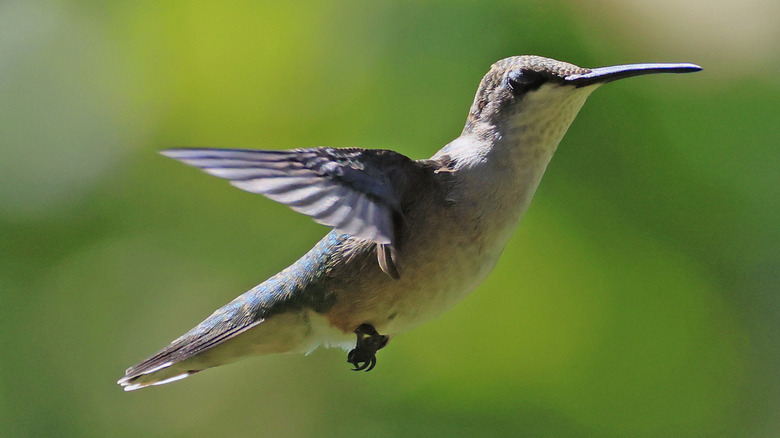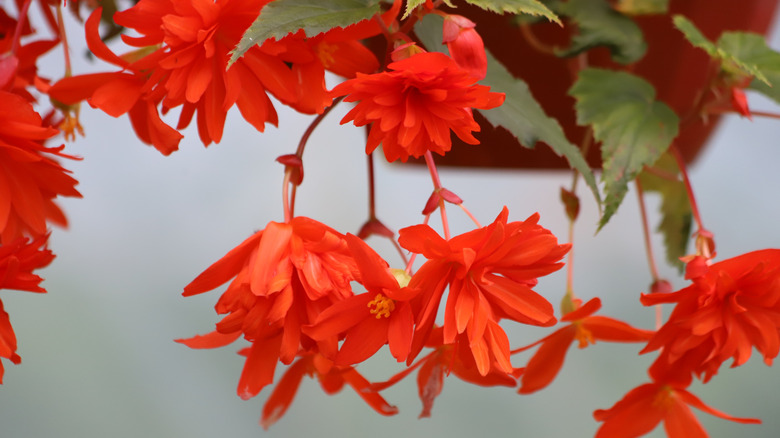The Red Blooming Flower That'll Fill Your Garden With Hummingbirds
Hummingbirds provide hours of eye-catching entertainment when fluttering around the garden, with their colorful bodies and agile movements. They're more than just a good time though, as they are also extremely good pollinators, hopping from flower to flower trying to keep up with their incredible metabolism. Not only do they give a boost to the flowering plants in your garden, but they also get up to 80% of their diet from insects and spiders, gobbling up pests like ants, aphids, spider mites, and mosquitos. In fact, hummingbirds are known to eat hundreds to thousands of insects in a single day, removing pesky bugs from your garden. So how do you get these incredible power players to hang out in your garden more? 'Bonfire' begonias (Begonia boliviensis 'Bonfire') are your secret weapon.
'Bonfire' is a cultivar of the Bolivian begonia, a tuberous species with bright red flowers that hummingbirds are drawn to because of their color and tubular shape. Thanks to the structure of their retinas, hummingbirds' eyes have a color sensitivity to red and yellow, making those hues appear more vibrant and attractive, while subduing shades like blue. This makes the 'Bonfire' begonia, with its fiery red blooms, a perfect flower for transforming your space into a hummingbird heaven.
How to keep 'Bonfire' begonias thriving in your garden
'Bonfire' begonias thrive with full sun or partial shade and are hardy only in USDA hardiness zones 9 through 11, although they can be grown as annuals in cooler regions. When planting them in a garden bed, space them at least 16 inches apart in moist, well-drained soil. Be careful not to expose them to standing water, as that can be fatal. Begonias also function well in baskets or flowerpots. This approach is convenient for moving the flowers around to different areas of the garden where you'd like to see more hummingbirds. That said, it's worth noting that these plants will need more frequent watering if planted in containers as opposed to the ground. If you're not experienced with these plants, learn more about how to take care of begonias before planting them in your yard.
And once you've started attracting those beautiful hummingbirds, you'll want to make sure to protect them while they spend time in your yard. There are a few hummingbird predators you don't want near your feeders or begonias. These are mainly poisonous spiders and snakes, but also house cats. Yes, your pet cat might be tempted to attack hummingbirds, so keep an eye on them if they are outdoor pets. Avoiding using pesticides on your begonias (and other garden plants) can invite hummingbirds to come back, since they like to eat the insects that pesticides would otherwise eliminate.

